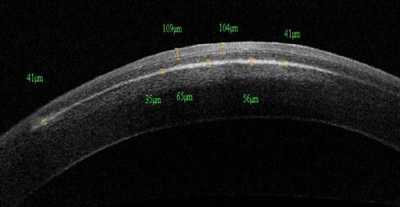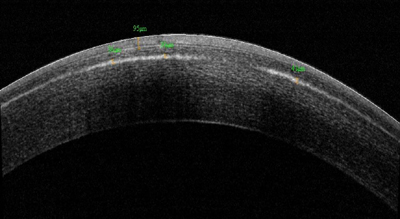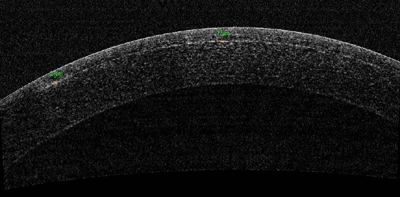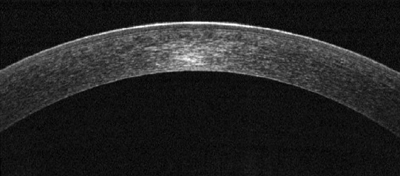Fourier domain OCT assists in infiltration assessment after LASIK
Fourier domain OCT has several advantages over time domain OCT.
Optical coherence tomography is a newer diagnostic imaging technique with a wide range of clinical applications.
 Amar Agarwal |
Recently, anterior segment OCT has been used for the clinical evaluation and progression analysis of corneal stromal infections. Anterior segment OCT that is used routinely for corneal evaluation with high-speed infrared light with a wavelength of 1310 nm is called time domain OCT.
Here, we report the advantage of Fourier domain OCT for the evaluation of corneal stromal infiltration. Fourier domain OCT has been used in evaluation of posterior segment pathologies in the recent past. We present an additional indication of Fourier domain OCT in evaluation of interface inflammation and its advantage over time domain OCT.
Evaluation of corneal infiltration
Stromal keratitis, or interface inflammation, is one of the complications of corneal refractive surgeries. There have been various etiologies reported for keratitis after LASIK. Standard protocol for evaluation, documentation and assessment of response to treatment in stromal keratitis has been serial slit lamp biomicroscopy. Confocal microscopy has also been used to detect interface inflammation. The advantage of Fourier domain OCT over confocal microscopy is that the inflammation can be quantified with the available caliper tool.
Fourier domain OCT (RTVue, Optovue) images were taken on the day of presentation of clinical symptoms of inflammation — pain, redness and decrease in vision — after LASIK. Serial follow-up images were taken with OCT, as shown in Figure 1, on day 1, day 3, day 7 and week 2.
As seen on day 1 (Figure 1a), the maximum infiltrate size was measured in the center at 65 µm, and minimal flap edema and interface fluid were observed. The infiltrate was 38 µm on day 3 (Figure 1b) and 17 µm on day 7 (Figure 1c). The peripheral infiltrate size was quantified as 41 µm, 41 µm and 28 µm on days 1, 3 and 7, respectively.
|
|
|
|
|
|
|
Figures 1a-1d. High-resolution Fourier domain
OCT image of the cornea showing the infiltration on day 1 (a), day 3 (b) and
day 7 (c) and a clear cornea without infiltration 2 weeks aftertreatment
(d).
Images: Agarwal A |
|
A standard point was taken for calculating the size of the peripheral infiltrate. The images were saved and reviewed later for follow-up. By 2 weeks after medical management, the patient was asymptomatic with a clear cornea and well-apposed flaps. No infiltrates were seen on the OCT image after 2 weeks (Figure 1d).
Fourier domain OCT vs. time domain OCT
Fourier domain OCT has a higher axial resolution (5 µm vs. 18 µm) and transverse resolution (15 µm vs. 60 µm) than time domain OCT. The acquisition time is less than time domain OCT. The number of scans taken by Fourier domain OCT is 26,000 A-scans per second compared with time domain OCT at 512 scans per 0.25 second. In addition, a three-dimensional image is possible in Fourier domain OCT.
Conclusion
Fourier domain OCT can be used as one of the diagnostic tools in objective assessment of corneal inflammation and response to treatment.

- Amar Agarwal, MS, FRCS, FRCOphth, is director of Dr. Agarwal’s Group of Eye Hospitals. Prof. Agarwal is the author of several books published by SLACK Incorporated, publisher of Ocular Surgery News, including Phaco Nightmares: Conquering Cataract Catastrophes, Bimanual Phaco: Mastering the Phakonit/MICS Technique, Dry Eye: A Practical Guide to Ocular Surface Disorders and Stem Cell Surgery and Presbyopia: A Surgical Textbook. He can be reached at 19 Cathedral Road, Chennai 600 086, India; fax: 91-44-28115871; e-mail: dragarwal@vsnl.com; Web site: www.dragarwal.com.













